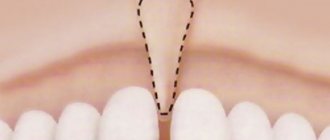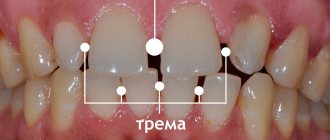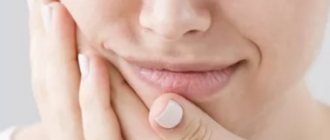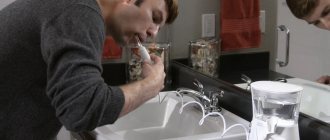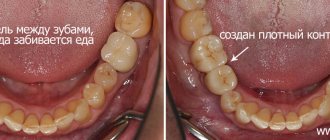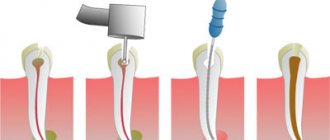According to statistics, every fifth person on the planet suffers from diastema - a gap between the front teeth. This is considered normal, especially if the cleft is small. But both large and small diastemas often become the causes of complexes and even various dental problems. Therefore, it is advisable for everyone who has a gap between their incisors to visit an orthodontist and find out from him how to remove gap between front teeth. Most often, treatment does not take much time, although it does require some investment.
Interestingly, a gap between teeth is considered a sign of creativity and significant talent. Some say that a man with a gap between his incisors is distinguished by a kind and cheerful disposition, and a woman with such a feature of appearance is prone to romantic love. Also, those with a small distance between their teeth are credited with special sensuality and the ability to enjoy the little things.
What is the correct name for the gap between the front teeth?
The correct name for the gap between the front teeth is diastema, which goes back to the Greek word diástema (Greek διαστημα). The term means "distance", "span" or "interval". Although in Greece the word was used without reference to dental disease, today diastema refers specifically to a dental problem.
A more simplified, but also correct name for the gap between the teeth is a gap or chip. This word is used primarily in literary language and works of art. But no matter what you call the problem, it still needs to be treated: although diastema is not the most unpleasant dental pathology, it remains a defect that can cause a number of dental problems.
Cost of correcting diastema
It is easy to guess that the cost of correcting a diastema depends on the chosen method and the need to use certain materials. The severity of the defect also matters.
In general, the most affordable way to achieve a beautiful smile is cosmetic correction or surgical plastic surgery. Artistic restoration, braces and other methods of correcting the position of teeth will be more expensive, but the cost of these methods remains affordable for most patients. When it comes to mouthguards, their production will be the most expensive.
Why does a gap appear between the front teeth?
To understand how to remove the gap between the incisors, you need to understand the causes of this problem. In some cases, diastema is a variant of the norm; it develops if a person grows small teeth with wide upper gums. It is not necessary to fix a small neat gap, as it is more of an aesthetic problem. It is usually hereditary.
This pathology can also occur due to the following reasons:
- too late or early change of teeth;
- congenital absence of one or more teeth (edentia);
- anomaly in the shape or size of the incisors;
- tongue frenulum too low.
Sometimes diastema occurs due to bad habits of chewing pens, pencils and other objects. In adults, a problem arises when the upper molars are lost: the human body is designed in such a way that when a void forms between the teeth, the remaining elements try to fill it, so the molars, incisors and canines diverge slightly and move. This happens very slowly, but eventually sometimes leads to the formation of gaps between the teeth.
Another cause of diastema is severe malocclusion and crooked teeth. Sometimes, if treated incorrectly, the incisors do not fit into place quite correctly, leaving a gap. In this case, it is necessary to continue visiting the orthodontist and complete the adjustment of the dentition.
You can read more about changes in bite and dental anomalies in a separate article on our website: All about bite: what it is like, why it is important to monitor it and how to treat improperly grown teeth.
Tooth displacement: reasons
The median straight line, which divides the face into two halves, should coincide with the interincisal median lines - that is, with those lines that can be conditionally drawn between the front teeth. All teeth should be symmetrically located relative to this line. If at least one tooth moves away from these lines, this is a malocclusion. In addition, there should be no increased spaces between the teeth; they should not overlap each other in the dentition.
The question of why teeth shift has long been of interest to orthodontists. In the 18th century, the French physician Pierre Fauchard, personal dentist of Louis XV, in his book “The Dentist-Surgeon, or Treatise on the Teeth” (1728), recommended tying abnormally growing teeth with silk threads to a strip of metal. At the end of the 19th century, Edward Engle proposed a classification, diagnostic methods and an apparatus for correcting occlusion, which was sold in American catalogs for about a hundred years - until the 1980s.
As doctors have established, heredity plays a large role in the occurrence of tooth displacement - if one or both parents had bite defects, then there is a high probability that they will appear in their children. In addition to heredity, the following reasons for displacement are distinguished:
- too late eruption of both milk and permanent teeth;
- disruption of the process of replacing baby teeth with permanent ones - for example, very early removal of a baby tooth;
- lack of space in the jaw arches (often leads to crowding of teeth);
- developmental anomalies of one or both jaws;
- abnormalities in tooth size;
- diseases of the temporomandibular joint;
- injuries to teeth and jaws.
In adults, tooth displacement can also occur due to injury or due to tooth loss or extraction. Neighboring teeth begin to shift towards the empty space, forming a malocclusion. This is one of the reasons why dentists, when teeth are lost, strongly recommend restoring them with prosthetics.
Is it possible to get rid of gaps between teeth?
If you have diastema, you should definitely visit an orthodontist, since getting rid of gaps in your teeth is not only possible, but also necessary. Modern treatment methods make it possible to cope with such a problem quite quickly, and dentists offer a large selection of methods for hiding the gap.
The only situation where treatment is not required is diastema on baby teeth in children. This is considered normal and does not require medical intervention. Over time, when the bite changes, the teeth take on the correct position on their own.
A small diastema on baby teeth is normal.
Retention period
The time when the patient is forced to wear a special retention guard or plate is called retention. This must be done, otherwise the teeth may quickly return to their previous location. Depending on certain factors, the orthodontist may prescribe the wearing of mouth guards, metal plates, or the installation of permanent wires.
The mouthguards should be worn all day and night, only being removed when eating and cleaning the mouth. Over time, it is possible to reduce the time of their use, for example, every other day. Mouthguards have many advantages; they have a shade similar to the color of your own tooth enamel, so they are not visible to others. They can be worn on one jaw or both at once. In some cases, metal wires are inserted into the aligners to help increase their rigidity.
Another option for retainers is a permanent wire. It has sufficient rigidity, so the teeth will remain in the desired position. It is attached to the inside of the dentition, which makes the treatment process invisible to others. Installation of the wire should be carried out only by an experienced specialist; this will allow you to achieve the desired result in the shortest possible time.
Types of diastemas
There are many types of diastemas. They are mainly classified according to the following features:
- False or true. False diastema occurs in children and is considered a type of normal. It disappears on its own after changing the bite. The teeth are not harmed. True diastema is permanent and requires treatment.
- Symmetry. There is a symmetrical cleft, in which the incisors have the same shift relative to each other, and an asymmetrical one, when one of the front teeth occupies the correct position, and the second is shifted. The latter is the most dangerous, because it disrupts the correctness of the dentition.
- Direction of the vertical axis of the incisors. It can be lateral, when the roots are parallel and the crowns diverge, corpus, if the tooth moves along with the root, and medial, when the incisors grow to the side or rotate around their axis.
False and small symmetrical diastemas are practically safe. The first will disappear on its own, the second is just a cosmetic defect. If the position of the tooth root is disturbed or the gap between the incisors is too large, it is better to consider treatment options.
Periodontitis
Sometimes painful sensations occur in a tooth from which the nerve has already been removed. When pressed, the tooth hurts and aches. Many patients are perplexed as to how a fully treated organ can produce such symptoms. However, treatment is not always of high quality. The following mistakes may be made during canal filling:
- perforation of root canal tissues with an endodontic tip;
- incomplete cleansing of nerve tissue from the canal;
- poor quality disinfection of treated canals;
- insufficient tightness of canal sealing;
- the use of cheap fillings that can dry out over time.
All of the above reasons lead to various complications in the dental cavity. Of course, this does not happen immediately after treatment: it may take a month, and sometimes several years. However, such therapy will sooner or later make itself felt. The causing tooth will begin to ache at night, and then will react with pain to any pressure. The essence of periodontitis is the penetration of infection into the tissues of the dentoligamentous apparatus. Through the tip of the root canal, pathogenic bacteria enter the periodontium. There they slowly spread, forming cysts and granulomas of various types. Treating this type of inflammation is quite difficult and takes a long time, and a large percentage of such diseases require removal of the neglected organ.
When the first symptoms of periodontitis appear, dentists recommend following the following tips:
- If a tooth hurts when biting, it is strictly forbidden to apply heat to the sore spot;
- take one or two tablets of painkillers such as paracetamol, tempalgin, analgin;
- brush your teeth, removing food debris from the carious cavity of the affected tooth;
- rinse your mouth several times a day with a solution of potassium permanganate, soda or furatsilin;
- Do not take anti-inflammatory drugs or antibiotics without a doctor’s prescription.
In order to prevent unpleasant consequences for the health of the body, treatment of periodontitis should not be postponed and hope that the disease will disappear over time. A timely visit to the dentist will preserve not only the health of the tooth, but also the entire body, since periodontitis contributes to the emergence and spread of harmful substances. Of course, toxins will negatively affect the functioning of internal organs and a person’s well-being.
The LeaderStom network of clinics specializes in dental therapy, orthodontics and prosthetics. Our specialists try to cure even the most advanced cases of chronic pulpitis and periodontitis with maximum preservation of natural dental tissues. Treatment tactics depend on the degree of neglect. In the initial stages, the disease can be eliminated by refilling the canals. By eliminating the source of infection, dentists achieve stable remission of the tooth and restoration of periodontal tissue. If the inflammation process has covered a large area of tissue, and a purulent process has already formed near the apex of the root, then in this case either surgical intervention or removal of the diseased tooth is possible.
Ways to correct gaps between teeth
The choice of treatment for diastema depends on the reasons for its development, the size of the gap, the characteristics of the patient’s jaw and his budget. The doctor also assesses the patient’s age and the condition of the dentition. All methods can be divided into cosmetic (hiding the problem) and therapeutic (changing the position of the teeth using correction tools). Let's consider the features of each method separately.
Braces
Installing braces is a classic way to eliminate dental deficiencies. They are a non-removable orthodontic structure that is attached to the teeth for a significant period. A variety of braces can eliminate even complex malocclusions, which makes such systems very versatile. During the existence of braces, several varieties of these orthodontic devices have appeared:
- Metal. The most popular and cheapest type of braces. They have a medium size and high efficiency, at a fairly affordable price. Very noticeable on teeth.
- Plastic. They look more aesthetically pleasing than metal ones and do not damage the enamel as much, but when wearing them you should not drink coffee, tea or products that color plastic, as it absorbs the colors.
- Ceramic. The most expensive and beautiful option of braces. They are completely safe, do not change color, and are almost invisible on the teeth.
- Sapphire. They belong to the ceramic group, but require less wearing time than classic models.
There are also gold braces - a premium treatment system, fancy and expensive, and various variations of plastic, metal, ceramics, for example, models with colored ligatures or overlays in the form of hearts, stars and other figures.
Appearance of different types of braces
The maximum effectiveness is shown by wearing braces at the age of 16 to 20 years, when the dentition has already completely changed, but remains quite mobile, because the bone tissue of the jaw is not fully formed. Treatment at this age gives stable and long-lasting results.
The main advantages of braces systems are:
- high efficiency;
- comparative safety;
- the ability to install a hidden bite correction system.
This method of treatment also has disadvantages, namely:
- long wearing period (from one year to 3 years);
- high cost of aesthetic types (sapphire, lingual);
- the need for specialized care, otherwise the risk of developing caries increases;
- Constant wear; braces cannot be removed for an event or during a trip.
Records
The principle of operation of the plate is similar to braces, but it looks different and can be removed from the teeth for a short time. The plates work best at an early age - up to 12 years. At this time, the bone tissue of the jaw is still soft, so the position of the teeth is easy to correct.
Plates for correcting bite
The advantages of records are:
- safety of treatment;
- high efficiency;
- the ability not to wear the product all the time;
Disadvantages of the system:
- may cause discomfort when wearing;
- not suitable for correcting serious defects.
Mouthguards
Mouthguards are orthodontic devices that are placed on the teeth, somewhat reminiscent of covers. They are made specifically for the patient using 3D technology and are sent as a set after taking measurements. The idea is to wear covers that put a little pressure on the teeth at first, then more and more even variations. As a result, the cutters snap into place under plastic pressure.
Transparent aligners are invisible on the teeth
The advantages of mouth guards are:
- ease of maintenance of plastic structures;
- comparative invisibility;
- high efficiency and the ability to simultaneously correct other malocclusions.
Disadvantages of this type of treatment:
- transparent aged aligners are still visible on the teeth and attract attention;
- the patient must strictly adhere to the wearing regime, otherwise the entire set of covers will have to be completely remade (they are made at one time).
Veneers and Lumineers
Veneers are microprostheses that are placed on the outer surface of the tooth. They hide the incisor and allow you to close the gap. Lumineers are made in much the same way as veneers, but they are much thinner and more discreet. Both types of onlays are made from modern materials that closely resemble real teeth, do not change over time and do not cause allergies.
Advantages of veneers and lumineers:
- quick effect, literally in 1-2 doses;
- durability of the onlays (veneers last 10 years, lumineers - about 20);
- impeccable appearance.
Disadvantages of products:
- there are contraindications, for example, veneers and lumineers cannot be placed if a person suffers from bruxism or increased tooth wear;
- cannot be used during an extreme lifestyle (the microprosthesis may fall off).
Veneers, unlike lumineers, have another significant drawback - teeth are ground down to fit them. Lumineers only affect the top layer of enamel, but their price is much higher.
Crowns
When treating diastema in adults, doctors often recommend installing crowns. These permanent structures completely cover the incisor, hiding the gap. At the same time, installing a crown completely restores the functionality of the tooth. True, it has to be sharpened. But, if the incisor has already suffered, for example, it has chipped or been susceptible to caries, this type of treatment is quite justified.
When installing a crown, grinding of the tooth is used
When installing a crown, it is very important to choose the right material. Until recently, there was only one option - metal, most often gold. The cheapest, but also the most visible type of crown. Today it is possible to install products that are very similar to real teeth, for example, ceramic (made of porcelain, aluminum oxide, zirconium dioxide) or metal-plastic. The latter are the cheapest, but can cause irritation to the delicate mucous membranes.
Advantages of crowns:
- safe and effective method;
- you can protect damaged teeth;
- lasts 10-20 years;
- result after several visits to the dentist.
Flaws:
- grinding of the tooth is required, which is unreasonable to do on healthy incisors;
- A crown made of high-quality materials is an expensive solution.
Implants
An implant is an artificial tooth that is mounted on a metal pin secured inside the jawbone. This is the most expensive and highest quality method of restoring teeth if their roots have died and are not preserved. When implants are installed, the functionality of the incisor is completely restored. The pins themselves are made primarily of titanium and are divided by type (each for its own type of tooth: molar, incisor, canine). Crowns can be made from different materials, but metal-ceramics are the most popular, since they stand out the least in the dentition.
Blank for implant installation
The advantages of installing an implant are:
- the effectiveness of the procedure for tooth restoration;
- quick visible results;
- service life is lifelong.
Disadvantages of technology:
- implantation is an operation that requires appropriate preparation;
- it is not always possible to insert a pin into the bone (it may be too thin);
- You will always have a permanent piece of metal with you, this causes certain problems (increased attention from security, inability to undergo an MRI, etc.).
Cosmetic correction
Cosmetic correction is the hiding of the diastema by forming a small filling attached to the sides of the incisors. Essentially, the specialist covers the gap with filling material. This is the simplest and cheapest method that does not harm the teeth.
Advantages:
- harmlessness with high efficiency;
- visible results after the first dose;
- no contraindications.
Flaws:
- if the filling materials were not of sufficient quality, they may change color, disturbing the aesthetics of the dentition;
- on average, a filling lasts 5-7 years, it will have to be changed, it may fall out;
- the incisors will not be able to work fully, the load on them will have to be reduced, otherwise this will lead to damage to the filling.
Artistic restoration
Unlike cosmetic correction, artistic restoration is a more complex procedure that gives a better result. With this method of closing a diastema, the doctor does not simply place a filling, but applies composite materials to the front teeth in layers. As a result, the result looks natural and does not require maintenance or replacement.
Pros of the procedure:
- after one or two visits the result is visible;
- with the help of restoration you can hide quite large distances;
- there are no contraindications;
- Composite materials do not change color over time.
Flaws:
- high price;
- not all diastemas can be corrected in this way;
- you will have to reduce the load on the incisors so as not to damage the composite.
Surgical plastic surgery
Surgery is required if the diastema forms due to abnormal growth of the frenulum. Typically, such an operation is performed in childhood or adolescence, then with the help of orthodontic structures to return the teeth to the correct position. The ideal time for the operation is 5-8 years, since the frenulum will not go away with age. If the child had surgery before the primary bite was changed, the permanent teeth will grow correctly.
Problematic frenulum, its plastic surgery and results
Advantages:
- high efficiency;
- a birth defect is eliminated;
- does not require correction in the future.
Flaws:
- the operation requires appropriate preparation;
- teeth can take several years to fall back into place.
Considering that diastema in children is a normal phenomenon, you need to regularly visit a doctor for examination. It is quite possible that an inexperienced parent will not see the problematic frenulum and will attribute the appearance of gaps to childhood. This is dangerous, because any disturbances in the oral cavity harm not only the teeth, but also the gastrointestinal tract, ability to speak, change the smile, etc.
Orthodontic correction methods
Orthodontic methods for correcting diastemas are rightfully considered the safest, most effective and gentle (they allow you to preserve a maximum of healthy dental tissues). However, their main drawback is the long duration of treatment. Malocclusions are eliminated step by step - for this, braces are used. Orthopedic treatment is primarily indicated for children and adolescents whose permanent teeth have recently replaced their deciduous predecessors. Braces are special orthodontic structures that are attached to the teeth from the inside (invisibility braces) or the outside. How long do you need to wear braces? This is determined by the doctor individually, but usually treatment continues until the bite is completely corrected (from 6 to 24 months). It is best to install braces when the jaw is actively growing.
Your dentist may also recommend mouth guards, which are small transparent covers for your teeth. Aligners contain information about the normal shape and size of teeth. These devices are made in such a way that they move individual teeth in the required direction, restoring their correct position. The result of this is that the teeth move closer to each other and the diastema is eliminated. Aligners have a transparent base, so they are even less noticeable on the surface of the teeth than braces.
The advantage of mouth guards is that they can be removed while eating. Moreover, since they are filled inside with a whitening compound, using this method, you will not only eliminate the gap between the front incisors, but also lighten the tooth enamel. This will also add beauty to your smile and eliminate the need for additional whitening procedures.
Orthodontists are indispensable if a person, in addition to diastema, is diagnosed with any other malocclusion. Metal braces are considered affordable and reliable for most patients.
Is it possible to remove a hole between teeth at home?
Due to the existence of childhood diastema, which disappears on its own after growing up, some are confident that gaps between teeth can be removed at home. This is wrong. Of course, you can buy a mouthguard by choosing it yourself, but don’t forget: a mistake will lead to big problems. Among them are improper development of the jaw, rapid tooth decay, damage to mucous tissue, etc.
The folk method of getting rid of diastema using a thread is very dangerous. Not only does it not work, but it also causes the central incisors to become unsteady. Because of such experiments, a person risks losing the front row of incisors by the age of 25-30.
What to do if your teeth are crooked
If the curvature is too severe, braces will likely need to be reinstalled. If the defect is minor, you can get by with regular retainers. In any case, if the slightest changes are detected in the oral cavity, the patient should immediately seek advice from his doctor.
There are situations when, even after installing a mouth guard or wire, the teeth still move apart. This is due to incorrect position or an error in the manufacture of the model. But, unfortunately, most often this happens due to the fault of the patient at the dental clinic.
Tired of wearing bulky orthodontic appliances, a person feels freedom and stops monitoring the condition of his teeth. He may forget to wear a mouthguard, not pay due attention to oral hygiene, etc. All this can lead to complications: the appearance of caries, inflammation, as well as displacement of units to their usual position. It is very important to follow all the recommendations of the doctor, who, after dismantling the structure, will definitely prescribe the use of a specific retainer, toothpastes, strengthening compounds, brushes of optimal hardness, etc.
How to prevent a gap in a child: prevention of diastemas
Diastema rarely occurs due to external causes, so it is difficult to prevent its occurrence. But in any case, it is important to follow the rules in order to notice violations in the early stages:
- regularly visit a doctor, both a dentist and an orthodontist;
- wean the child from thumb sucking and other objects;
- Eat well, including in your diet the required amount of foods with calcium, magnesium, fluorine, phosphorus, vitamins D, A, C.
The earlier the diagnosis is made, the easier it is to solve the problem. In adulthood, prevention consists of visiting a doctor in a timely manner and wearing braces, if required. It is also important to immediately restore lost elements of the dentition using implants or “bridges.”
Causes of dental defects
Lengthening or shortening of one of the incisors is usually a congenital anomaly. This feature of dentition development is associated with genetic factors. Experts also include the following as possible causes of the problem:
- periodontitis,
- malocclusion,
- presence of supernumerary teeth,
- abnormal shape of the alveolar process,
- disruption of the process of resorption of the roots of baby teeth.
Changes in the length of the central incisor can also be a consequence of jaw trauma. If a tooth is mechanically damaged, its lower part may chip. Because of this, the appearance of the smile deteriorates, discomfort occurs when chewing, and the risk of developing various diseases increases.
Consequences
All people decide for themselves whether or not to remove the diastema. A small chip will not do any harm, but large gaps have very negative consequences, namely:
- the formation of an incorrect bite, which affects the bone skeleton, reduces the quality of nutrition, and leads to an increased risk of caries;
- the appearance of disturbances in diction due to the inability to pronounce some sounds correctly (the air flow is not fully retained by the teeth);
- violation of aesthetics, which can lead to prejudice on the part of employers and colleagues.
Conclusions. Expert advice
A gap or gap between the front teeth is called a diastema. This is a malocclusion that occurs for various reasons: genetics, early change of teeth, anomaly in the shape or size of the incisors, etc. There are false and true diastemas: the first appears in children and is “outgrown”, the second is permanent and requires treatment.
It is possible to get rid of the gap between teeth, but all methods require a visit to the orthodontist, and attempts to correct the problem using traditional methods are simply dangerous. To correct the dentition, braces, plates, mouth guards, and surgical methods are used. You can also make cosmetic corrections: install veneers and lumineers, close the gap with a filling, or extend incisors.
It is not necessary to correct the diastema if it is small and the doctor considers it safe. A small cleft is a cosmetic defect. If the gap is large, it causes caries, eating problems, curvature of the jaw bone, etc. The development of diastema can only be prevented through regular visits to the doctor.
Observation after dental prosthetics
The doctors took the situation under observation and met with the patient a few months after the completion of dental prosthetics. It was clear that the movement of the teeth continued. The result got worse. The lower front teeth have moved further apart and shifted. Aesthetics were lost, gaps appeared between the teeth, where tartar immediately began to form, and the gums became inflamed.
Type of teeth during observation:
Ultimately, we saw this picture - gaps between the teeth:
At Family Dentistry, we work with complex cases and provide support to patients throughout their lives and beyond.
We began to understand the reasons for the possible movement of teeth. Most dentists believe that they work with immobile teeth. But some very good specialists know that the teeth and bones of the skull are not motionless. And only a few good dentists know that teeth are immobile and know how to work with it.

